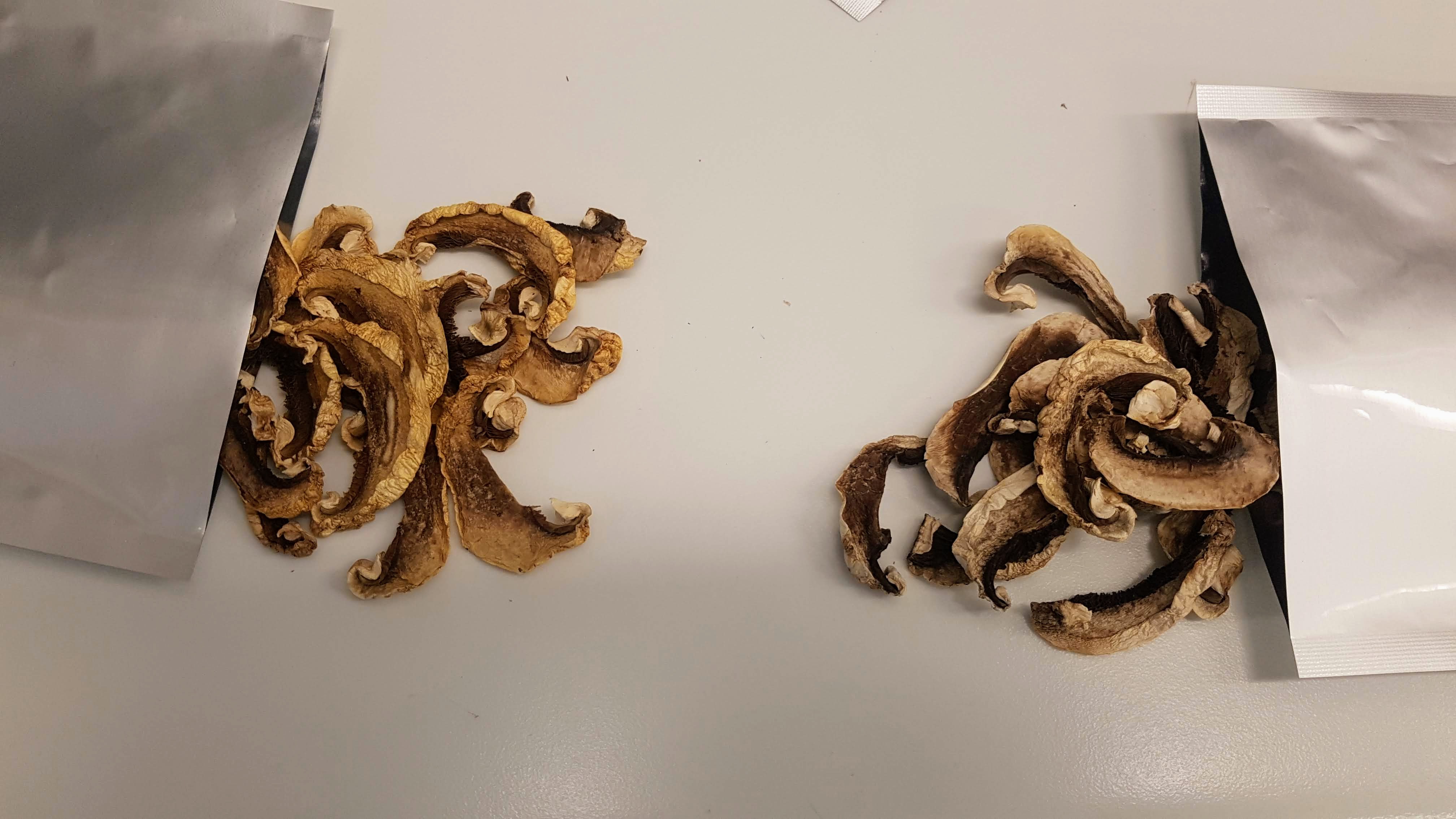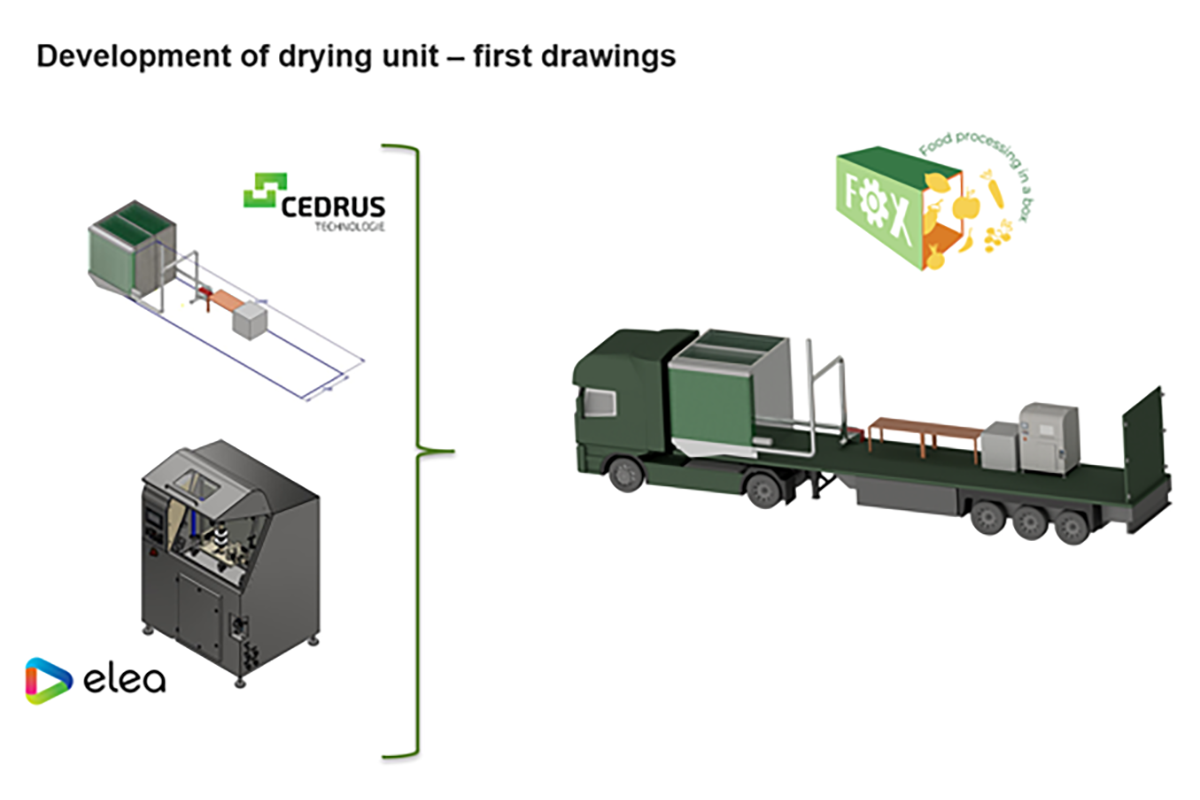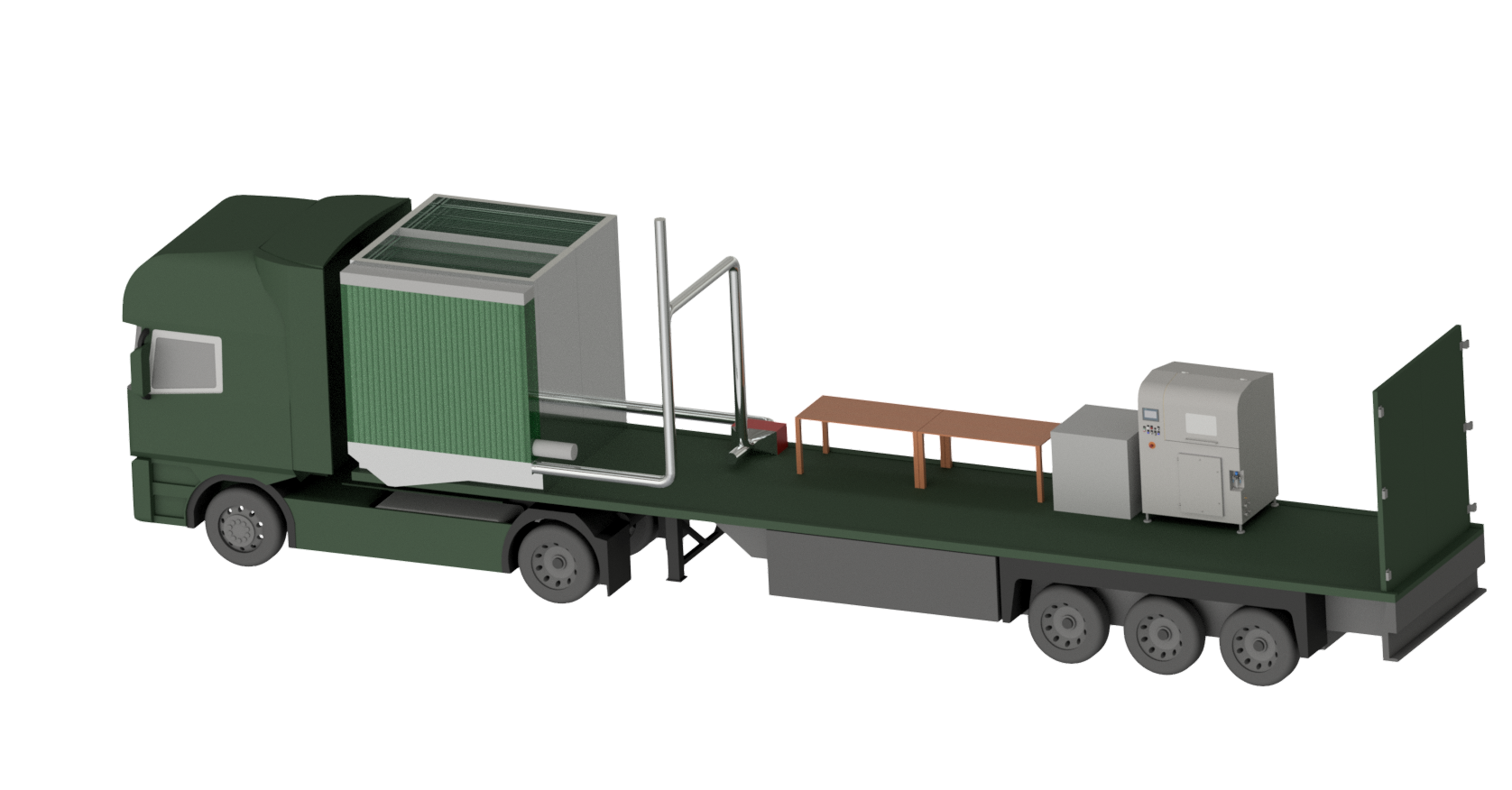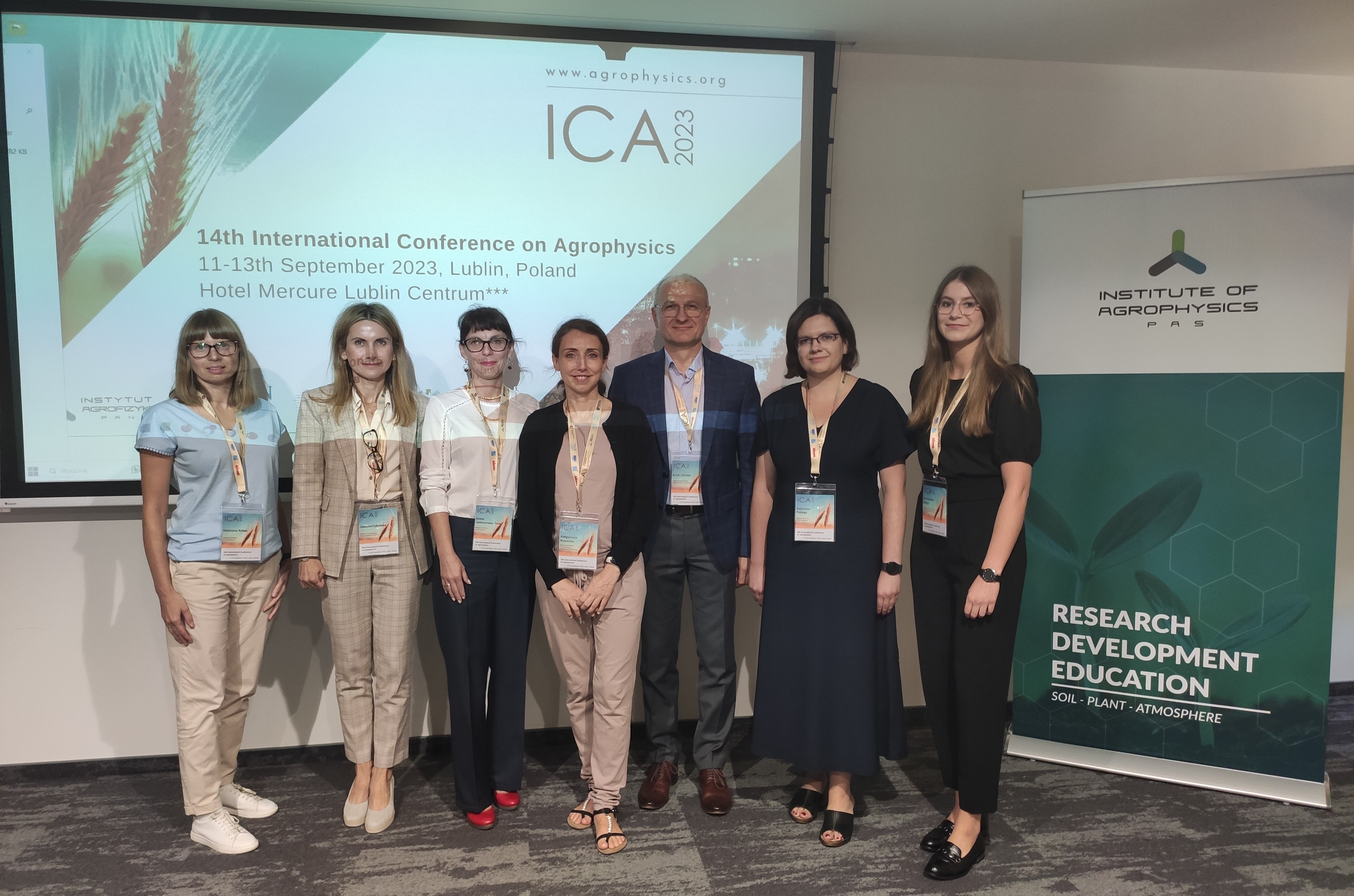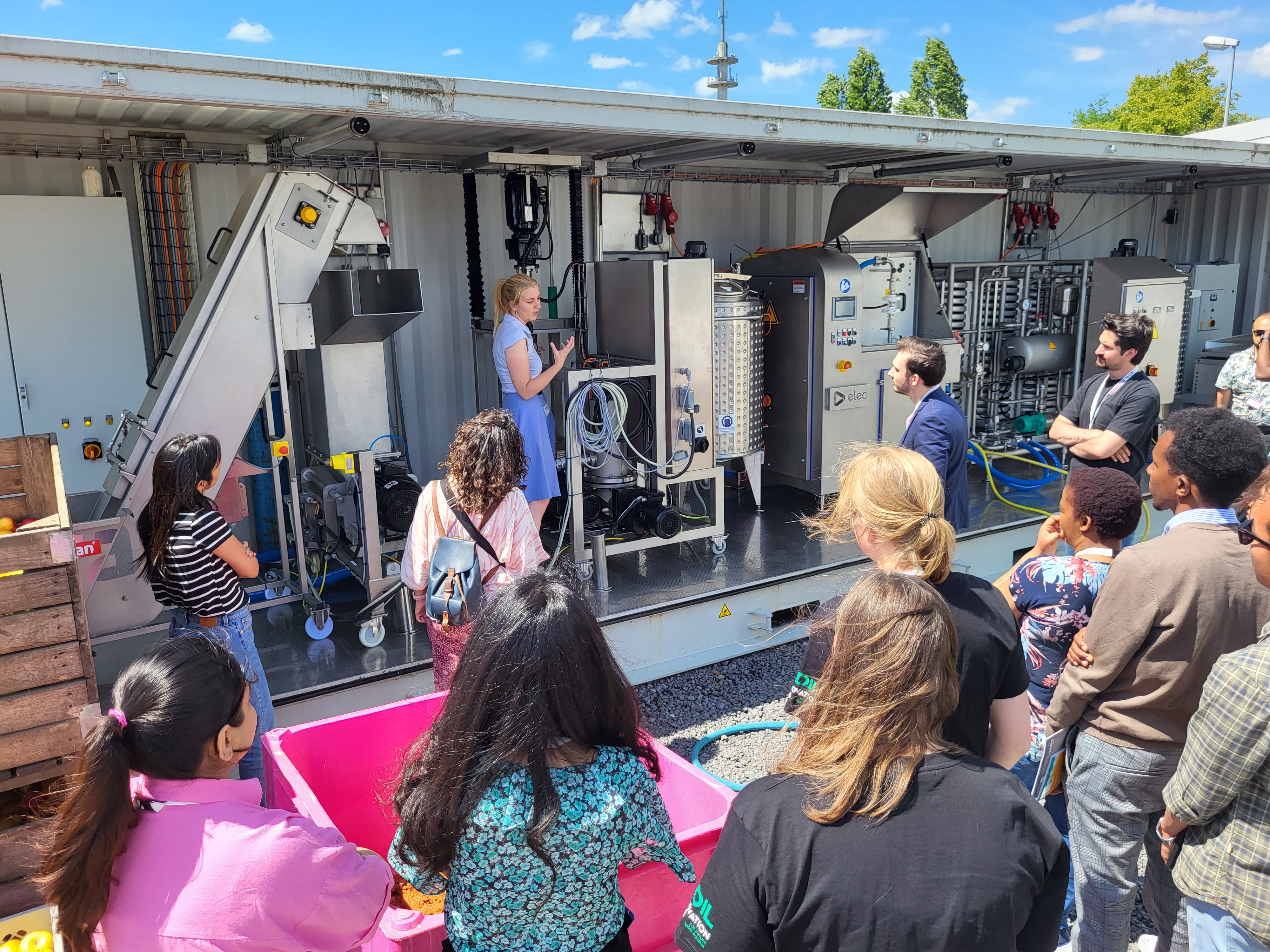In short – Food Circle 2
In Food Circle 2 ‘Low temperature drying’, academia and industry are developing a down-scaled, mobile and flexible drying unit with modern non-thermal pre-treatment method for dehydration of apples, strawberries, carrots and mushrooms.
What has happened in year 1?
Partners from Warsaw University of Life Sciences (WULS-SGGW), DIL, VUPP, CEDRUS and ELEA worked together on:
- Analysing the impact of the technologies High Hydrostatic Pressure (HPP), Ultrasound (US) and Pulsed Electric Field (PEF) on apples, strawberries, carrots and mushrooms properties
- Evaluating the feasibility of utilisation of HPP, US and PEF for drying applications
- Estimating the dimensions and energy consumption of the drying technology in down-scaled mobile drying unit
Drying and energy use
Drying is one of the oldest and most popular food processing and preservation methods for fruit and vegetables but also one of the most energy consuming. Drying takes around 10% of the worldwide industry energy consumption.1 However, in the FOX project, researchers use different low energy drying and pre-treatment methods to develop a down-scaled system.
Organic and local
Consumers buy more and more organic products. It’s estimated that by 2025, the dried fruits and vegetables market will grow between 5.2 and 5.4% yearly.2,3 Besides, consumers also want local products with a short food supply chain. These and other trends in food sector make that both consumers and farmers can benefit from a growing organic and local food market in the upcoming years.
What are the different drying methods studied in FOX?
FOX researchers test drying methods:
- Convection drying
- Infrared assisted drying
- Microwave drying or vacuum drying
And pre-treatment techniques:
- High pressure processing (HPP)
- Ultrasounds (US)
- Pulsed electric field (PEF)
Which is the most promising pre-treatment method?
Apples, strawberries, carrots, and mushrooms were treated by HPP, US and PEF and afterwards their electrical and/or textural properties were measured (see figure 1).
One may ask how electrical or textural properties can be associated with drying? When the cell membrane is damaged by the pre-treatment, the electrical and/or textural properties are changed, and water evaporate faster.

Figure 1. Measurements of textural properties of HPP treated apples (VUPP) and US treated mushrooms (WULS-SGGW)
Based on the electrical, textural properties measurements and visual appearance evaluation of the samples, PEF was stated as the most promising technology for drying enhancement (see figure 2).
Figure 2: Mushrooms dried by microwave without pre-treatement (on the left) and with PEF pre-treatement (on the right).
US caused irrelevant changes in the electrical properties of the tissue, related to less water evaporation capacity. In turn, HPP caused not only undesirable or unaccepted changes of texture but also of colour like the example of mushrooms in figure 3.
Therefore, PEF in combination with different drying methods will be studied in detail in upcoming years.
Figure 3. HPP treated mushrooms
Drying in a mobile container unit
Researchers made the first estimations and drawings of the down-scaled ‘in a box ’prototype (see figure 4). This part, however, will be studied in the upcoming years.
Figure 4. First drawings of the FOX dryer and pre-treatment system.
Up next: year 2
In the upcoming year, drying performed by different methods and preceded by selected pre-treatment methods will be studied – for instance PEF pre-treated apples or mushrooms dried by infrared or microwave drying technique. Based on these results, more advanced estimations and drawings of FOX drying system will be developed. Stay tuned.
References:
- Strumiłło C, Jones PL & Żyłła, R (2014). Energy aspects in drying. Handbook of industrial drying: 1075-1099.
- Market Data Forecast, Dried Fruits Market. Published February 2020
- Transparency Market Research – Food and Beverages press release ‘Dried Vegetable Market is expected to rise at a CAGR of 5.4% during 2018-2026’. Published 19 October 2020.

